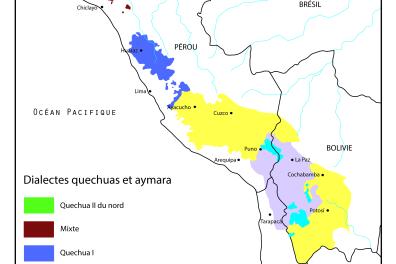Discovering the language
What is commonly referred to as "Quechua" corresponds to a fairly diversified set of dialects, indeed a family of languages whose historical linguistics traces its first expansion back to the second half of the 1st millennium AD from a focus in south-central Peru. There are two main dialect groups, usually referred to as "Quechua I" and "Quechua II". The former brings together the dialects spoken in central and north-central Peru, while the latter encompasses the Quechua dialects of Ecuador and Colombia to the north, and those of southern Peru, Bolivia and Argentina to the south. The variety taught at Inalco is that of southern Peru (Cuzco and Ayacucho dialects), which is very close to Bolivian Quechua.
Quechua enjoys official status in the three countries where it is mainly spoken. The current constitutions of Ecuador (2008), Peru (1993) and Bolivia (2009) have established the possibility of officializing the language at a regional level. Several regions or departments in Peru and Bolivia have recently given it official language status alongside Spanish, making its teaching compulsory at all levels of primary and secondary education. In these three countries, Quechua is generally the language of instruction in elementary school in rural areas where it predominates. Quechua languages also continue to carry a wealth of vernacular knowledge (e.g. on the environment, agriculture and livestock farming), as well as a rich oral literature of narrative and song. Today, Andeans are seeking to establish a balanced relationship between modernity and their own linguistic identity, and multiple efforts are being made to bring the language into new areas of communication.
Studying Quechua at Inalco
The Training in Quechua language and culture given at Inalco takes place over four years and is currently the most comprehensive and advanced existing in any country. Grammar is taught through the acquisition of structures and the analysis of a variety of texts. Complementary to this teaching, practical language courses are provided throughout the four years by a native Quechua speaker. These language lessons are complemented by courses in history, geography, ethnology and oral and written Quechua literature. In the fourth year (Advanced Diploma), a course introduces students to the diversity of dialects.
